
You can sell the best products online and have a stunning website, and still get very little to no sales.
That’s how fierce the competition has become online.
This is no surprise considering 7.4 million posts are published daily.
With how noisy the internet has become, you need tried and tested marketing strategies that can put your products and services in front of your target customers.
If you’re struggling with closing more contracts or generating sales, then this guide is for you.
1. Run a referral program.
Referral programs work by rewarding your existing customers who promote your products.
For instance, if you want more applicants for your life coach certification programs, tell your subscribers you’re giving service discounts for every person they invite and signs up.
That’s what Baxter of California did:

The store gave a 25% discount to its customers and their referees when they promote the brand via email, Messenger, or Facebook.
Through these referral strategies, reach a wider audience and increase your chances of scoring more potential buyers.
2. Create gift guides.
A gift guide is a set of purchase ideas based on the customer's relationship with the recipient (e.g. gifts for moms), a common interest (e.g. Harry Potter fans), or special occasions.
Boost your shoppers’ interest in your products by creating gift guides and help them find the perfect item for themselves and their loved ones.
Launch your gift guides three months before the event, and target them to specific groups.
Here’s a sample gift guide by Dylan’s Candy Bar:
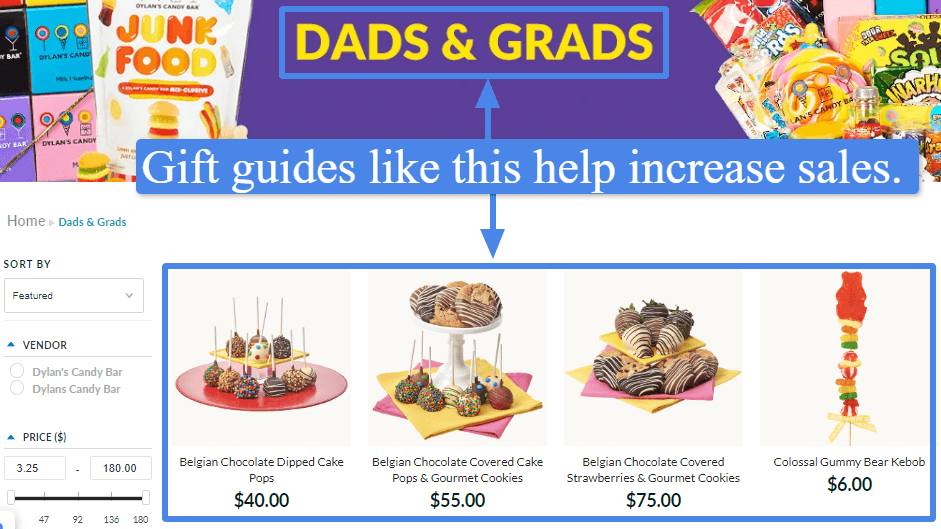
The store specified who the gifts were for and displayed the items, price tags, and search filters.
Gift guides like this let you recommend your products, widen consumers’ brand awareness, and draw in consumers with buying intent.
3. Advertise on social media.
Use social media ads to grow your sales. Most platforms have easy-to-use native advertising features to help you run your campaigns.
Facebook, for instance, guides you through creating your objectives, selecting your target audience, picking your ad placements and format, and setting your budget.
Choose if your ads should be a single photo or video, slideshow, carousel (series of up to 10 photos), game previews, collection, stories, or in Messenger.

It even provides data and insights about your ads’ performance and suggestions to improve it.
Through social media ads, introduce your brand, products, and offers to your followers, lead them to your site’s landing page, and invite them to sign up or purchase.
4. Hand out digital gift cards.
If your shoppers can’t decide on what to give their loved ones, offer digital gift cards instead.
That way, they can share the digital gift card to their loved ones, who can then choose which products to buy from your store.
Check out Pandora’s digital gift card:
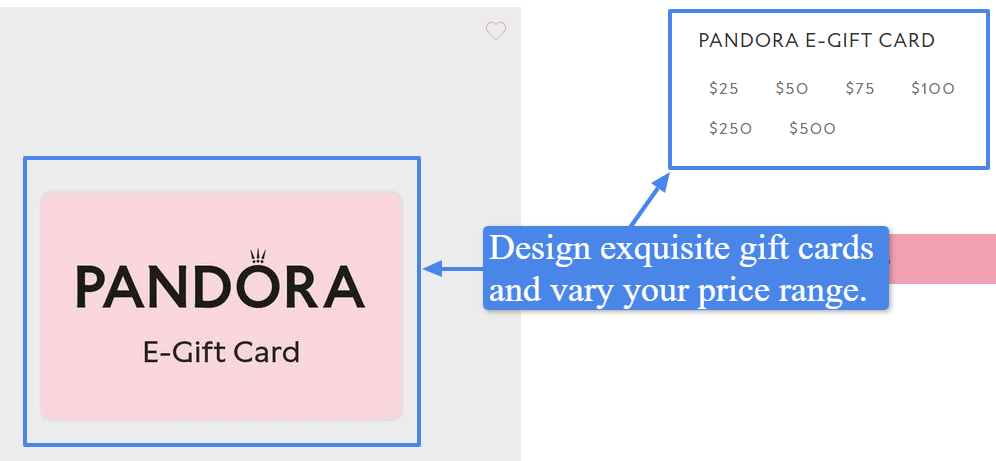
Like Pandora, design first-rate digital gift cards according to your branding and vary the price range at which customers can avail.
Promote them in your marketing emails and social media posts, and designate a gift cards page, so your shoppers know where to get them.
5. Launch coupon marketing.
Statistics say that 90% of shoppers use coupons, and 37% buy more items than they usually do, making coupon marketing one of the best ecommerce marketing strategies for your store.
Promote your coupons, vouchers, and discount codes by creating huge banner ads on your website. Link them to your dedicated pages so your shoppers can quickly see and avail of them.
Here’s how Boden UK presented their coupons to their website visitors.
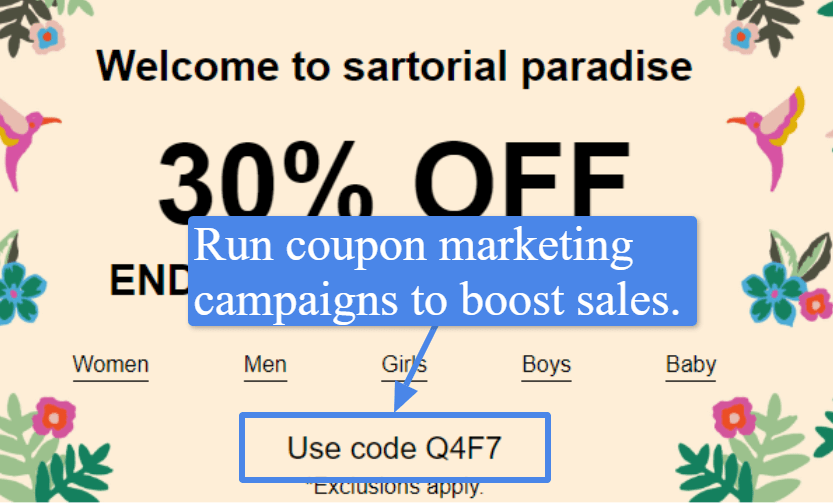
Boden UK gave away a discount code and flashed the announcement on its banner.
Through coupon marketing, more customers will flock your store and purchase, boosting your sales and revenue.
6. Use strategic pricing.
Don’t price your services blindly; rather make use of Conjointly's Gabor Granger Pricing Method or a tool that is purposeful and offers fruitful outcomes.
Pricing based on gut feel alone can put you at a disadvantage over your competitors who do ample research to make sure their products and services are priced strategically.
There are several ways to come up with effective pricing methods. One of which is to use a dynamic pricing strategy. This pricing method works because you tailor fit your product prices based on current trends or demands -- as opposed to using a generic (or across the board) pricing structure.
With a strategic pricing strategy, you bolster your marketing campaigns’ efficacy, ultimately increasing your online sales. Don’t price your services blindly.
7. Publish videos on YouTube.
90% of viewers say they discovered new brands and products on YouTube, making it a goldmine of sales and marketing opportunities for your online store.
Leverage this platform by publishing product explainer and demo videos, which are among the most popularly searched content on YouTube.
Set the thumbnail size to 1280 x 720 pixels, design catchy thumbnails and video titles, and show consistent branding.
Neil Patel shows us how that’s done:
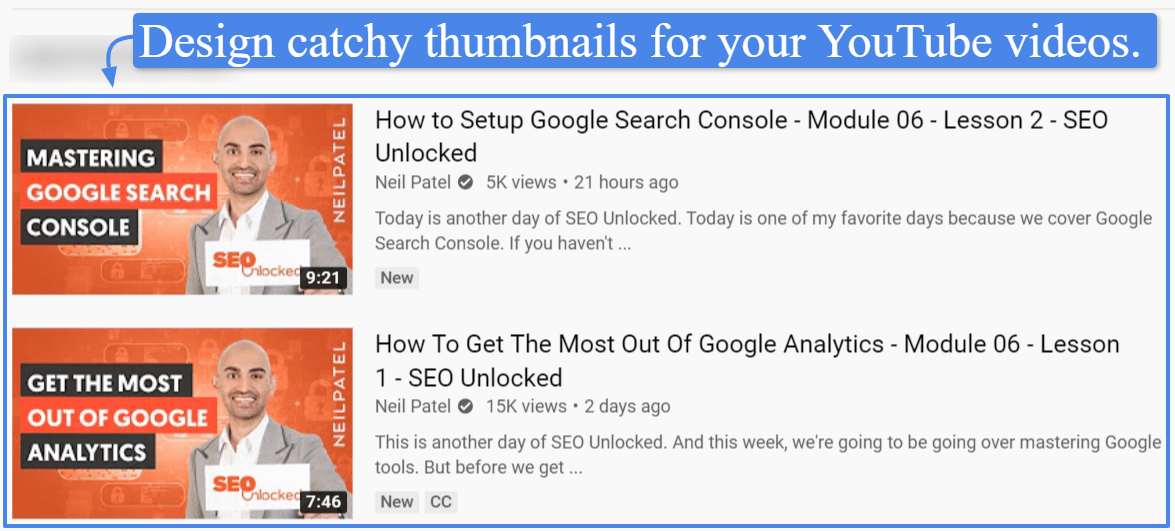
Add CTA buttons, video cards inviting them to watch your other videos, and link cards leading to your product catalog or other landing pages:
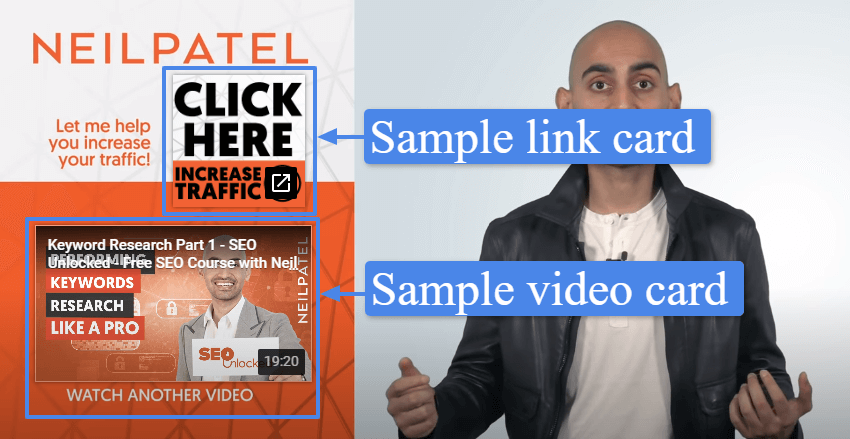
Finally, embed your YouTube videos on your homepage, blog section, or other relevant places in your site.
8. Design eye-catching promotional emails.
Attractive promotional emails grab your subscribers’ attention, stimulate their interest in your offer, and lure them into buying your products. Nick from SalesFlow says it's crucial to know what you're selling insofar you are figuring out the best channels to spread the voice about it: 'Once you have found your ideal customers and know what they are talking about, it is time to interact.'
Start by creating short, engaging, and relevant subject lines, with action verbs at the beginning.
Simplify your email designs. Use the right colors, put lots of white space, make your CTA button stand out, and integrate the right links. Keep your content concise and make it sound exciting.
Lastly, analyze your emails with marketing automation software to measure your click-through rates and other metrics and improve your campaign.
9. Host contests and giveaways.
People love entering contests and giveaways because of the chance to bag huge prizes and free stuff.
Leverage that to widen your customer base and email list, introduce your brand and products, and promote future sales offers to more potential buyers.
Pick exciting prizes, such as limited-edition items, complete product sets, all-expense-paid trips, merchandise from your influencer’s market, etc.
Launch your contest with tools such as Kingsumo.
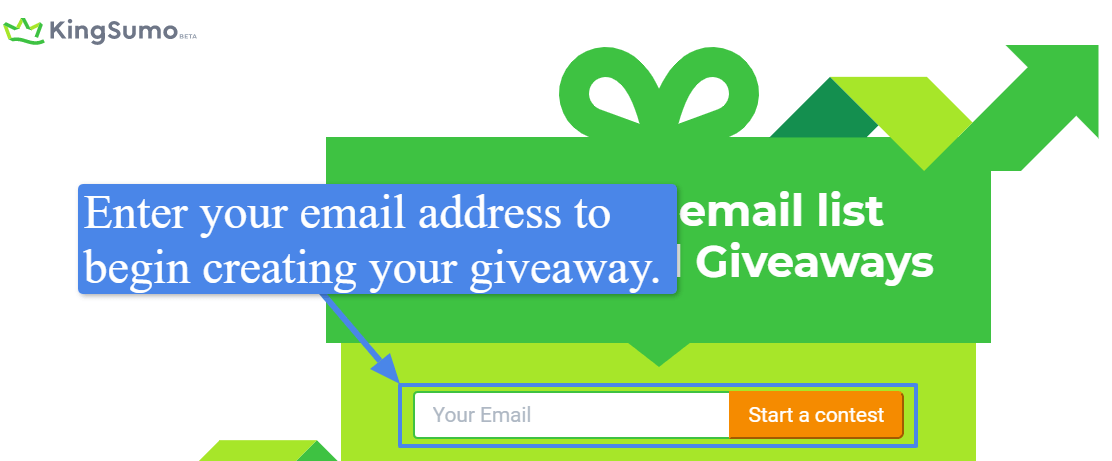
Enter your email address and fill in the details such as your giveaway title and description, start and end date and time, when you’ll announce the winner, your company name and URL, etc.
Your announcement will then look like this:
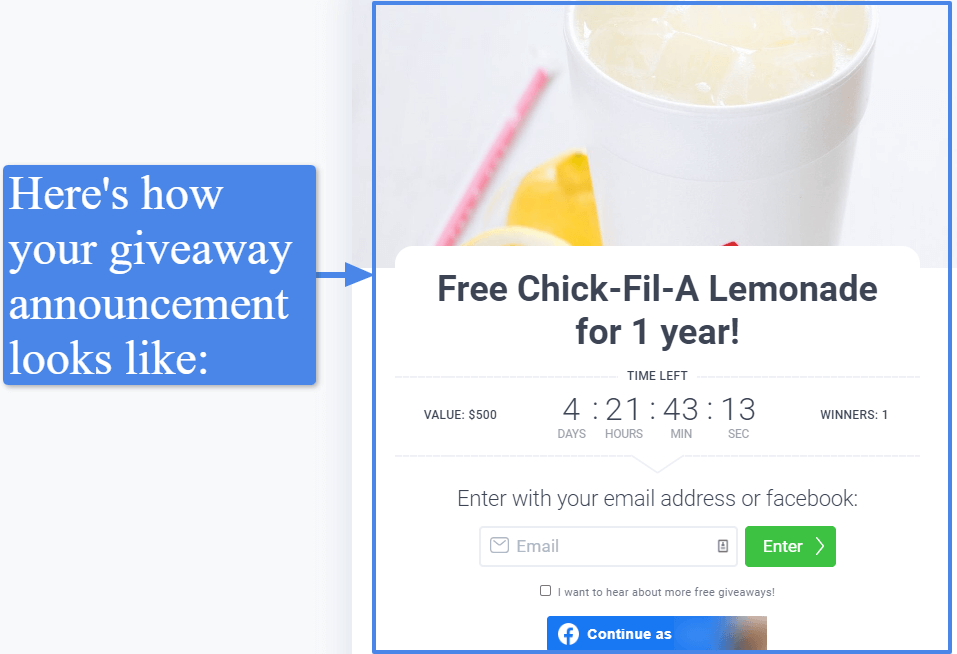
To keep non-winners interested in your brand, inform them that they scored runner-up prizes, such as a gift card with a minimum required spending.
It’s a win-win situation where everyone gets rewards, and you get additional sales.
Additionally, invite your contestants to receive alerts on your future giveaways, including promos and product releases.
Raise your sales to nauseous heights now.
Marketing takes time, effort, and perseverance, but eventually, you’ll reap truckloads of sales if you implement the tips we shared.
Follow through on your marketing offers, launch your tactics at strategic times, be creative, and don’t stop engaging and reaching out to your customers.
Thanks for signing up to Minutehack alerts.
Brilliant editorials heading your way soon.
Okay, Thanks!


